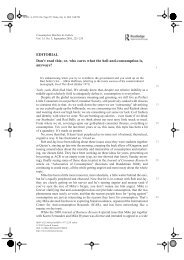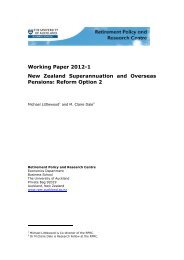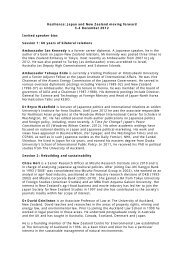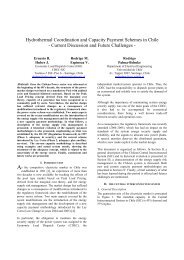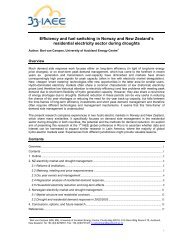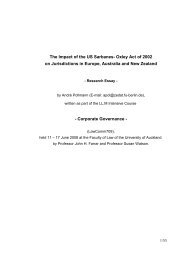TAX NONCOMPLIANCE AMONG SMALL and MEDIUM ...
TAX NONCOMPLIANCE AMONG SMALL and MEDIUM ...
TAX NONCOMPLIANCE AMONG SMALL and MEDIUM ...
Create successful ePaper yourself
Turn your PDF publications into a flip-book with our unique Google optimized e-Paper software.
1. INTRODUCTION<br />
To date, the pervasiveness of tax noncompliance remains of serious concern to the majority of<br />
tax administrators around the world. Tax noncompliance not only poses a serious threat to<br />
effective tax <strong>and</strong> voluntary compliance; it also has a negative impact on the economy. In 2008-<br />
2009, Her Majesty’s Revenue <strong>and</strong> Customs (HMRC) estimated the United Kingdom tax gap to<br />
be around £42 billion, <strong>and</strong> of this, £15 billion was due to tax fraud, evasion <strong>and</strong> some criminal<br />
activities (HMRC, 2010). Whilst the Inl<strong>and</strong> Revenue Board of Malaysia (IRBM) reported that<br />
the additional taxes <strong>and</strong> penalties of 2010 amounted to about RM1,013.63 million of the<br />
finalized audited corporate tax cases (IRBM, 2010). The rising tax noncompliance has urged the<br />
government <strong>and</strong> tax administrators to examine the factors that cause tax noncompliance.<br />
Over the years, there has been a plethora of studies to examine tax compliance behavior.<br />
However, a majority of these studies focused on compliance behavior of individuals; very few<br />
studies focused on corporate taxpayers. This is surprising because in most developed <strong>and</strong><br />
developing countries, corporate income tax contributes a substantial portion of the federal<br />
revenue collections. In Malaysia, approximately 50 per cent of total revenue collected is derived<br />
from corporate income tax. Notably, the Ministry of Finance reported that the corporate sector<br />
contributed about RM44 billion to the federal government in 2011 (Ministry of Finance, 2011).<br />
This amount has increased by 21.2% from the revenue contributed by the corporate sector<br />
forecasted in 2010 (Ministry of Finance, 2010). The fact demonstrates the importance of the<br />
corporate income tax to the federal government <strong>and</strong> given its importance, it is imperative for the<br />
IRBM to enhance their enforcement activities to deter corporate tax noncompliance each year.<br />
Allingham <strong>and</strong> S<strong>and</strong>mo (1972) argued that there are two effective ways to deter noncompliance;<br />
first, to increase the penalty for tax noncompliance <strong>and</strong> second, to increase tax audit. In Malaysia,<br />
with effect from the year of assessment (YA) 2008, under Section 113 (2) of the Income Tax<br />
Act (1967), the penalty rate for incorrect return found in tax audit can be equal to the amount of<br />
tax undercharged (100%) (IRBM, 2009). Arguably, this penalty rate is rather high. With regard<br />
to tax audits, in Malaysia, tax audits became a core activity after the self-assessment system<br />
(SAS) replaced the official assessment system in 2001. For instance, in 2010, the IRBM (2010)<br />
reported that there were 1,732,258 tax audited cases finalized with a collection of RM2,870.62<br />
million in additional taxes <strong>and</strong> penalty. Of these, 78,220 of cases finalized comprised corporate<br />
taxpayers with RM1,013.63 million additional taxes <strong>and</strong> penalty raised, the highest in the record<br />
of tax audit since the implementation of the SAS (IRBM, 2010). These figures support Kasipillai<br />
(1999). He claimed that data on finalized tax audited cases can provide some evidence of the<br />
magnitude of the problems of tax noncompliance in Malaysia. However, the approximate<br />
magnitude of tax noncompliance cannot be determined for small <strong>and</strong> medium enterprises (SMEs)<br />
due to the lack of data from the IRBM, as well as, lack of past studies in estimating tax<br />
noncompliance by different categories of taxpayers.<br />
2



